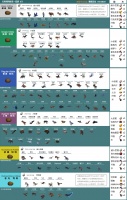Warm Care for Pets After Surgery: A Home Care Guide to Accelerate Recovery
Understanding the Needs of Post-Surgery Recovery
Pets after surgery, whether it is spaying/neutering or minor dental procedures, are in a vulnerable state and require special attention to avoid complications. Spaying may involve abdominal incisions that take weeks to heal; tooth extractions may cause oral sensitivity, affecting eating. Dogs may appear lethargic due to residual anesthesia, while cats may hide due to pain. Recovery needs vary by breed, age, and type of surgery; for example, puppies recover faster, while older cats may need more rest.
Observing the post-surgery condition of pets can provide guidance for care. For instance, is the dog frequently licking the wound? Is the cat refusing to eat? Recording these details, such as the duration of lethargy or frequency of bowel movements, can help owners assess recovery progress. Understanding the specific impacts of surgery, such as hormonal changes after spaying that may lead to fluctuations in appetite, is the foundation for developing a care plan.
It is crucial to treat pets with empathy. Post-surgery discomfort may make them anxious or sensitive, and owners need to remain patient, avoiding forced activity or ignoring abnormalities. Documenting behaviors during the first week post-surgery, such as redness or swelling of the wound or changes in appetite, provides a reference for the veterinarian. Gentle observation and detailed recording are the first steps in helping pets move towards recovery.
Keeping the Wound Clean and Safe
Wound management is a top priority in post-surgery care; cleanliness and protection can prevent infection. On the first day post-surgery, check if the wound is clean and free of bleeding, and observe if the surrounding skin is red, swollen, or has an odor. Following the veterinarian's guidance, gently wipe the edges of the wound with sterile gauze dipped in saline solution 1-2 times a day, avoiding vigorous rubbing or using alcohol, which may irritate the skin. Keep the wound dry; if the pet gets it wet, immediately pat it dry with a clean towel.
Preventing pets from licking or biting the wound is key. Use an Elizabethan collar or post-surgery suit, ensuring the size is appropriate; the dog's collar should cover the tip of the nose, and the cat's suit should fit snugly but not tightly. Observe how the pet adapts to the protective gear, such as whether they scratch or try to remove it, and record the duration of discomfort, such as whether it lasts more than a day. If the collar interferes with eating, try a soft version or temporarily remove it during feeding, but supervise closely.
Record the condition of the wound daily, such as whether the stitches are loose or the color of any discharge, and take photos for the veterinarian's assessment. If you notice pus or a foul odor, contact the veterinarian immediately. Keeping track of cleaning frequency and the effectiveness of protection, such as the number of days the Elizabethan collar is used, can optimize care. Detailed wound management acts like an invisible hand, protecting pets from the threat of infection.

Adjusting Diet to Promote Healing
Post-surgery diets should be gentle and easy to digest, supporting recovery while avoiding gastrointestinal burden. On the day of surgery, pets may lack appetite due to anesthesia and should fast for 4-6 hours, after which a small amount of clear water can be offered, observing for vomiting. If there are no abnormalities, feed 1/4 of the normal portion the next day, such as boiled chicken breast or veterinarian-recommended prescription wet food, in 3-4 small meals to reduce stomach pressure.
Gradually return to a normal diet, increasing to half the amount on the third day, and observe stool and appetite, such as whether the dog resumes bowel movements twice a day and whether the cat licks the bowl. Avoid high-fat or hard foods, such as bones or cheap dry food, as they may cause diarrhea or strain the wound. Adding probiotics (under veterinary guidance) can stabilize the gut, and record the effects after feeding, such as whether soft stools decrease.
If the pet refuses to eat, such as a cat not eating for more than 24 hours, try warming the food to release its aroma or use a syringe to feed liquid nutrition gently. Record the amount and response at each feeding, such as whether the dog prefers wet food, to adjust the plan. A scientific dietary arrangement acts like a gentle remedy, aiding the pet's wound healing and recovery of strength.
Controlling Activity and Providing Rest
Excessive activity post-surgery may tear the wound or delay healing; reasonable rest is key to recovery. Limit vigorous exercise for dogs, such as prohibiting running, jumping, playing frisbee, or chasing for at least 7-10 days, keeping walks to 5 minutes, moving slowly in circles, and choosing flat surfaces to avoid pulling on the leash, which may cause discomfort. Cats should avoid high jumps, as falling from a cat tree may injure the abdomen; temporarily remove high toys or lower the height of the shelves, encouraging ground activities, such as gently pushing a ball of yarn, maintaining low intensity to protect the wound.
Create a quiet resting area, such as a corner of the living room or a bedroom, with a thick sleeping mat, away from noise and foot traffic. Include familiar blankets or the owner's old T-shirt (after cleaning) to soothe the pet's emotions. Observe how the resting area is used, such as whether the dog lies down voluntarily or whether the cat curls up to sleep, and record the duration of stay, such as whether it exceeds 2 hours.
If the pet remains active, such as the dog trying to rush to the door, increase gentle interactions, such as grooming to distract them, and observe if they become calmer, recording the reduction in activity. If the cat hides, check if the resting area is too exposed and adjust the cover. Record the effects of rest management, such as the frequency of the pet being lethargic, to optimize the environment. A comfortable resting area is like a warm lamp, accompanying the pet through the post-surgery period peacefully.
Soothing Emotions and Reducing Stress
Post-surgery pets may feel uneasy due to pain or changes in their environment; emotional care can accelerate recovery. Maintain a stable routine at home, such as fixed feeding and petting times, to enhance the sense of security for dogs and cats. Communicate softly, such as saying "good dog" or "good cat," while slowly stroking their back, observing if the pet relaxes, such as whether the tail wags lightly, and recording the frequency of interactions.
Provide low-intensity entertainment, such as giving the dog a chew toy or the cat a bell ball, avoiding overstimulation. Observe the effects of entertainment, such as whether the cat focuses on playing, and record the duration of interest. If the pet appears restless, such as the dog whining, it may be due to pain; check the wound or consult the veterinarian, recording any triggers for abnormalities, such as noise disturbances.
If stress persists, such as the cat excessively grooming, try using pet-safe calming sprays, like pheromone diffusers, and record any changes after use, such as whether hiding decreases. Document the progress of emotional care, such as the number of times the pet approaches voluntarily, to optimize strategies. Gentle companionship is like a warm hand, helping pets emerge from post-surgery unease.
Monitoring Recovery and Communicating with the Veterinarian
Continuously monitoring the pet's recovery process can help identify problems promptly and ensure healing. Check temperature and weight daily; normal dogs are about 38-39 degrees Celsius, and cats are about 38-39.2 degrees Celsius. If the values exceed or continuously decline, record the specific numbers and times, and contact the veterinarian immediately. Observe the healing of the wound, such as whether the area around the stitches is smooth, and record changes in color and swelling, such as from red and swollen to pink.
Pay attention to whether bowel movements and urination are regular, such as whether the dog resumes daily bowel movements within 2-3 days post-surgery and whether the cat urinates at least once a day. Record any abnormalities, such as cloudy urine or blood in the stool, and take photos for documentation. Recovery of appetite and spirit is also important, such as whether the cat starts grooming itself or whether the dog wags its tail, recording the timing of these positive signals.
Attend follow-up appointments on time, usually 7-10 days post-surgery for suture removal, bringing the recorded observation diary, such as wound photos or appetite fluctuations, to discuss recovery progress with the veterinarian. Record the veterinarian's advice, such as whether to continue medication or adjust activity levels. If management at home is challenging, such as the dog tearing the post-surgery suit, seek professional guidance and document the effectiveness of the response, such as the acceptance of new equipment. Continuous monitoring and close communication act like a guiding light, leading pets steadily towards health, and owners can feel peace and joy in every step of progress.
相关知识
Warm Care for Pets After Surgery: A Home Care Guide to Accelerate Recovery
A Comprehensive Guide to Care for a Leopard Gecko
A Complete Boa Constrictor Care Guide
Leopard Gecko Care Sheet
The Ultimate Leopard Gecko Care Sheet
Pet care (宠物护理) in summerNow most people like to keep pets in their houses. They
The Ultimate Guide to Caring for Leopard Geckos
Leopard Geckos as Pets: Key Facts You Need to Know
大学英语宠物Pets作文(通用26篇)
【精选】宠物英语作文合集5篇
网址: Warm Care for Pets After Surgery: A Home Care Guide to Accelerate Recovery https://www.mcbbbk.com/newsview1148937.html
| 上一篇: 给宠物负责任的爱,新瑞鹏集团贯彻 |
下一篇: 狗狗手术后吃什么恢复的快 |
推荐分享

- 1养玉米蛇的危害 28694
- 2狗交配为什么会锁住?从狗狗生 7180
- 3我的狗老公李淑敏33——如何 6236
- 4豆柴犬为什么不建议养?可爱的 4637
- 5南京宠物粮食薄荷饼宠物食品包 4563
- 6中国境内禁养的十大鸟种,你知 4429
- 7湖南隆飞尔动物药业有限公司宠 4259
- 8自制狗狗辅食:棉花面纱犬的美 4257
- 9家养水獭多少钱一只正常 4212
- 10广州哪里卖宠物猫狗的选择性多 4122






